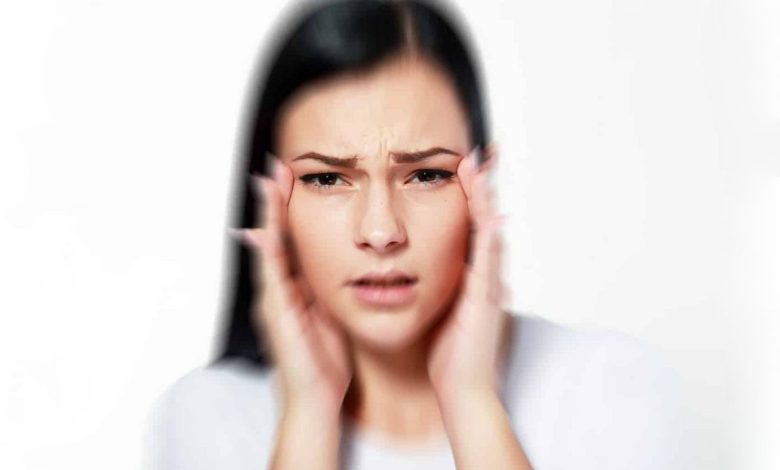Pain in the face (facial pain): What's it, causes, symptoms, diagnostics, treatment, prevention

Face pain
What is facial pain?
Pain in the face is a general term for pain, that affects any part of the face, including cheeks, forehead and jaw. It can be caused by various conditions, including headaches, sinus infections and dental problems. Facial pain can range from mildly annoying and uncomfortable to severe and debilitating..
Causes of pain in the face
Pain, that starts in the face, may be caused by nerve problems, injury or infection. Pain in the face may also start in other parts of the body..
- Tooth abscess (constant throbbing pain on one side of the lower face, aggravated by eating or touching)
- cluster headache
- Herpes zoster (shingles) or herpes simplex (herpes) infection
- Facial trauma
- Migraine
- Myofascial pain syndrome
- Sinusitis or sinus infection (dull pain and tenderness around the eyes and cheekbones, which increase when leaning forward)
- painful tic
- Temporomandibular Joint Dysfunction Syndrome
Sometimes the cause of facial pain is unknown.
Symptoms of pain in the face
The symptoms of facial pain will depend on the underlying cause., but may include:
- Pain in the face from mild to severe
- Pain or throbbing
- Pressure or tightness in the face.
- Symptoms, associated with headache, such as hypersensitivity to light, sounds and smells.
- Nausea and vomiting (with headache)
- Congestion or runny nose (for sinus infections)
- Sore throat (with sinus infections)
When to see a doctor
If you experience frequent or severe facial pain, it is recommended to contact a healthcare professional, to determine the cause and get the proper treatment. Besides, contact a healthcare professional, if you experience any of the following symptoms in addition to facial pain:
- Numbness or tingling in the face
- swelling of the face
- Facial paralysis
- Fever or chills
Questions, that your doctor may ask
Your doctor will ask you a series of questions, to help diagnose. Some typical questions may include:
- Where exactly do you feel the pain?
- How long has the pain been?
- Does any particular activity make the pain worse??
- Do you have other symptoms, besides facial pain?
- Do you have problems with your teeth, e.g. caries or cracked teeth?
- Do you have allergies?
- Do you have other diseases, such as diabetes,?
Diagnosis of pain in the face
If you have an emergency (eg, possible heart attack), you will be stabilized first. The doctor will then ask about your symptoms and medical history and perform a physical examination.. You will be referred to a dentist for dental problems.
You can take the following tests:
- X-rays of teeth (for suspected dental problems)
- ECG (for suspected heart problems)
- Tonometry (with suspicion of glaucoma )
- X-ray of the paranasal sinuses
Neurological tests will be performed, if nerve damage could be a problem.
Treatment of facial pain
Treatment for facial pain depends on the underlying cause.. Common treatments may include:
- Medicines. Over-the-counter painkillers are usually prescribed for facial pain., Taki how ibuprofen, or prescription migraine medications. Your doctor may also prescribe antibiotics to treat sinus infections..
- Physiotherapy. For more persistent facial pain, a doctor may recommend physical therapy., e.g. massage and stretching, to relieve pain and tension.
- Dental treatment. If dental problems are causing you facial pain, your dentist can recommend treatment, such as placing fillings or crowns, to solve this problem.
- Operation. In some cases, surgery may be needed to treat facial fractures or other serious facial injuries..
Home treatment for facial pain
There are several things, which you can make at home, to relieve facial pain.
- Apply a cold or warm compress. Apply a cold or warm compress, eg, cloth, filled with ice cubes, or heating pad, to the face, which hurts. Do it by 10-15 minutes once a day, to reduce pain and inflammation.
- Drink plenty of water. Keeping hydrated can help reduce facial pain, since dehydration can be a trigger. Aim to drink at least eight glasses of water a day 8 ounces every day.
- Vapor inhalation. Steam inhalation can help open the sinuses and bring relief. You can do it, taking a hot shower or boiling a pot of water, and then inhaling the vapor.
- Use relaxation techniques. Relaxation methods, such as yoga, deep breathing and progressive muscle relaxation, can help reduce stress and tension, which can aggravate facial pain.
Prevention of facial pain
There are several steps, you can take, to reduce the risk of developing facial pain:
- Avoid Triggers. Try to identify and avoid actions and situations, which can cause facial pain.
- Practice good oral hygiene. Brush and floss your teeth regularly, visit your dentist for regular checkups and cleanings.
- Manage stress. Take Action, to reduce stress and anxiety in your life, eg, establish regular exercise, practice relaxation techniques and get enough sleep.
- be healthy. Follow a healthy diet, drink plenty of water, get enough sleep and avoid alcohol, tobacco and drugs, to reduce the risk of facial pain.
Used sources and literature
Garza I, Robertson CE, Smith JH, Whealy MA. Headache and other craniofacial pain. In: Jankovic J, Mazziotta JC, Pomeroy SL, Newman NJ, eds. Bradley and Daroff’s Neurology in Clinical Practice. 8th ed. Philadelphia, PA: Elsevier Saunders; 2022:chap 102.
Degree KB. Headaches and other head pain. In: Goldman L, Schafer AI, eds. Goldman-Cecil Medicine. 26th ed. Philadelphia, PA: Elsevier; 2020:chap 370.
